Aerial hoop 85 cm
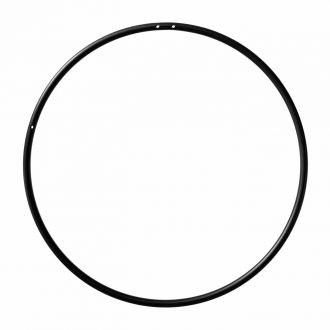
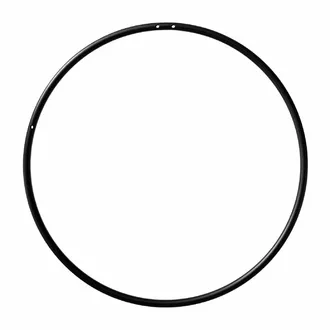
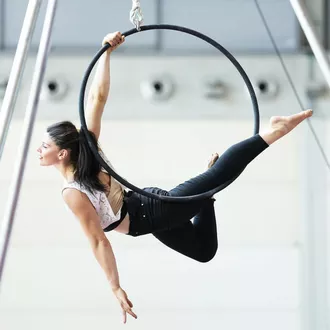
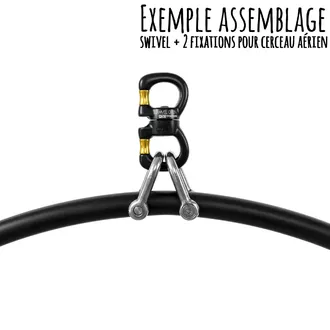
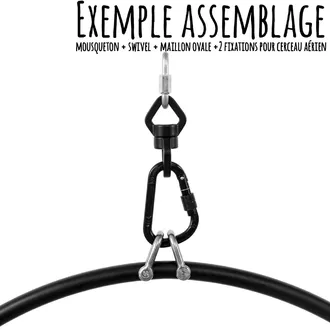
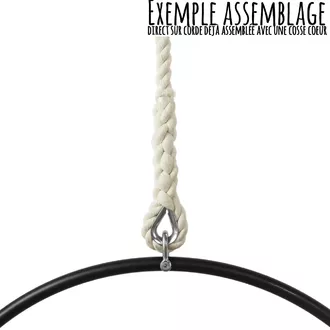
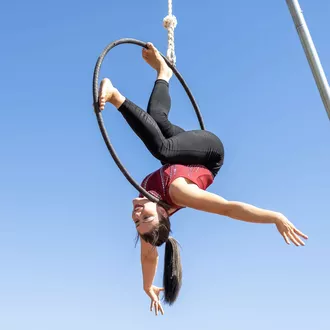
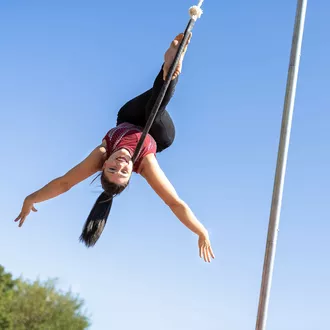
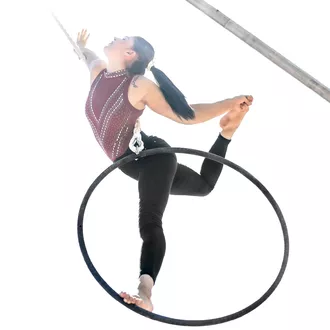
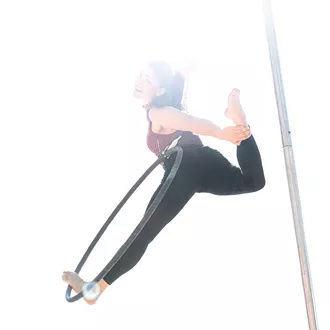
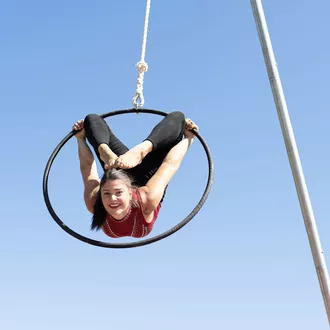
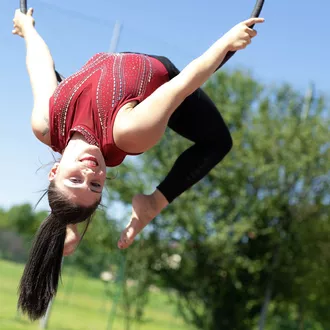


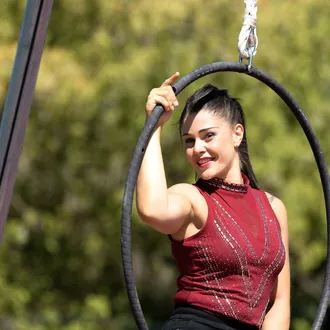
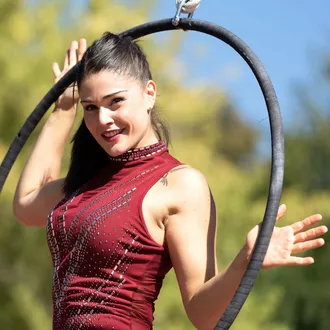

Item sold individually, without fixings . Remember to order them separately! In the photos titled "Assembly example", the fixing items are not supplied with the hoop, you will find them on our site in the Aerial equipment category.
Aerial hoop:
The simplicity of setting up aerial hoops makes them a popular circus device. The model presented here is versatile thanks to the different types of possible attachments. It can be set up fixed to the end of a rope. It can also be used with a pivot to allow 360° rotation or used swinging with an attachment on each side.
What diameter of aerial hoop should I choose?
The diameter of your aerial hoop is chosen according to your height. When sitting on the hoop, there should be 10cm of headroom. You can measure this by sitting on a chair (e.g. height between the chair and your head = 70cm, so you will need an aerial hoop with an internal diameter of 80cm). If you are buying for a circus school where several people will be using the same hoop, this space may vary slightly and extend up to 15cm.
With this method, you will be sure not to hit your head on the top of the hoop when you are sitting. If you are teaching students who vary in height, remember to check that they cannot hit their head before you begin :-).
NetJuggler's opinion on the aerial hoop:
Made in Italy by Play , we have decided to offer you this model because on the market it is the model that offers the most complete certificates for any use in a professional environment.

Technical characteristics:
- Outer diameter: 85 cm.
- Inner diameter: 80cm.
- Tube diameter: 2.5cm.
- Type of use: static or swinging. 360° rotation with a pivot attachment ( not supplied ).
- Certificates and tests carried out by up to 2 people on the site at the same time.
- The structure is made of tubular steel with a diameter of 25 mm and a thickness of 2.75 mm.
- This model is also available in diameters 90, 95, 100 and 110cm.
- Anti-corrosion treatment.
Adhesive tape coating:
The hoop comes ready to be covered with fabric grip. We recommend the Prodigy Snake Tape . This grip has the particularity of not releasing glue residue on the hands and body, even after intensive use of the hoop.
Attachment system:
A ring is sold packaged alone. You will need to purchase the aerial hoop attachments separately. Use a single attachment for static use and/or 2 attachments for swinging use. The structure has 3 holes (visible in the photos), depending on your assembly, the gap will be either 50cm or 55cm. We have included some photos of examples of attachments.
If you use a single hook, it is possible that the hoop will pivot slightly on itself (even if you do not use a pivot), to compensate for this, fix it at two points.
Certificate for aerial hoops:
Extract from the certificate:
Play Juggling Manufacturer Information:
Play Juggling manufactures this item in Italy . Play's items are known for being of good quality, with particular attention to detail. Their product range includes beginner's equipment as well as renowned equipment used by professionals in the entertainment industry.
Optional additional product:
What are the conditions for installing an aerial hoop?
Height is needed:
To install a hoop, you will need a ceiling height of at least 4 meters. The hoop will not necessarily be 4 meters high, but you need height above and below the hoop. Any installation with a height lower than 4 meters will cause you frustration and very limited use of the apparatus. Imagine yourself hanging from the hoop, you need a lot of space below it. Now imagine yourself standing on the bottom of the hoop, you also need space above you. With a swinging movement on the hoop, you will need even more space. Without the necessary space, you will end up with a hoop that will have a role similar to that of a swing.
Dynamic vs. Static:
Remember that a moving body can weigh up to 3 times the mass of a static body. When you are on an aerial hoop, you are a moving body. A fixture that will withstand your stationary (static) mass will not be sufficient.
Fixing at your home as an individual:
Your life or your child's life is going to be on a hoop. Don't neglect its installation.
An aerial hoop attachment cannot be improvised. Consult a rigging specialist, an architect, or seek the advice of a mason. During our discussions with some novice customers, we are told to use punching ball attachment plates. These attachments are made to attach 30 to 50 kg to the ceiling. The mass of a person in motion (dynamic) can be up to 3 times their mass in a static position. Never use this type of plate, an accident would be assured. Each building has a different structure of its own with its own resistances and materials. One of the best solutions that requires the least technique is to use a ring sewn around an imposing beam. Here again, seek the advice of a specialist.
Fixing in a professional environment:
Do not carry out any installation of anchor points without having a study and installation carried out by professionals.
Delivery outside the EU
For delivery outside the European Union countries, additional delivery costs may be added. Our website does not know how to calculate these costs, we invite you to contact us so that we can establish a quote together to deliver this item to you.
Aerial Hoop Returns and Exchanges Information
We find that many customers order aerial hoops without taking the time to read the description or advice on choosing the right size.
In case of size error, the return and shipping costs of a new hoop will be entirely at your expense. Note that these costs can be high, as an aerial hoop exceeds the standard dimensions of the carriers.
To avoid any inconvenience, do not hesitate to contact us before your purchase if you have any doubts. Our team is easily reachable by phone (which is rare these days!) , and we will be happy to advise you.
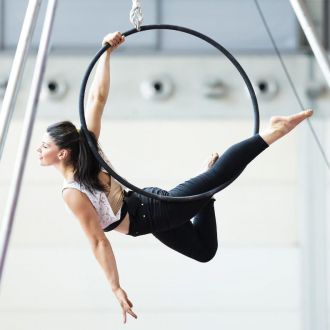
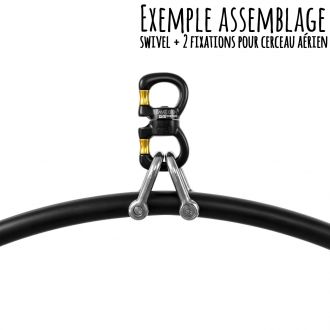
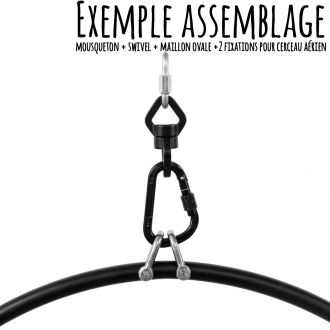

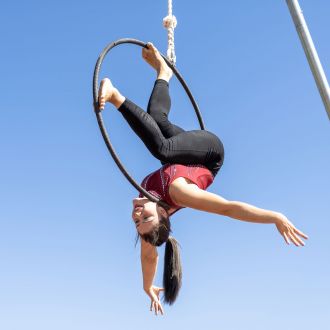
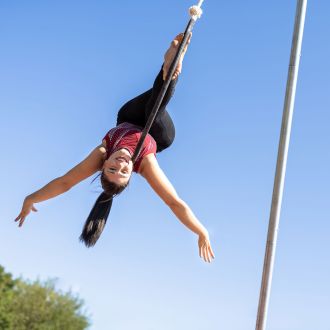
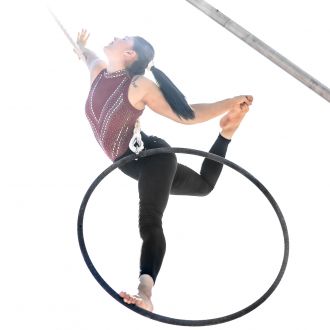
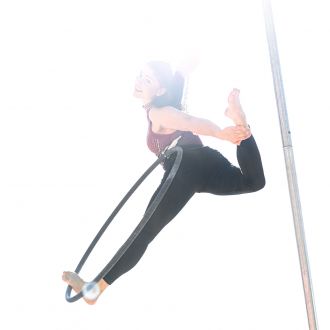
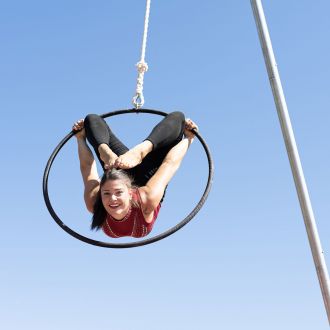
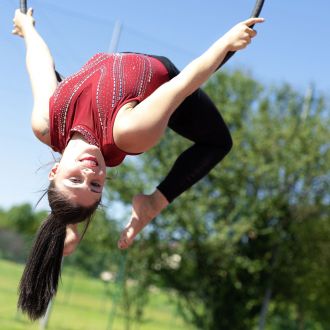
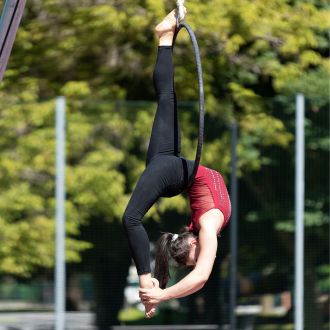
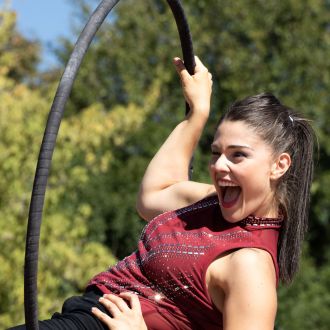
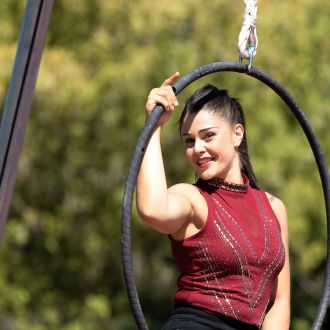
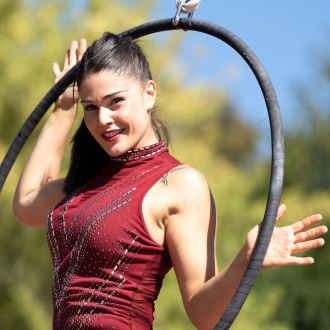
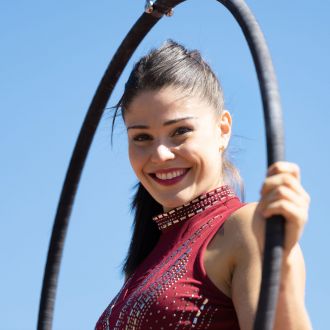
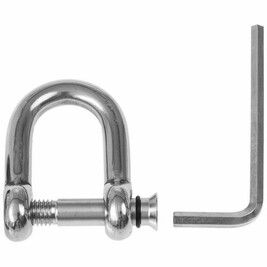
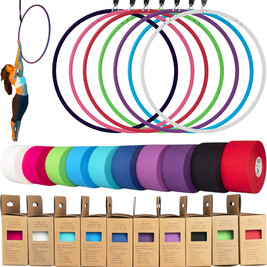
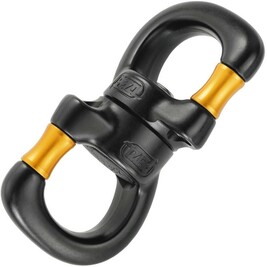
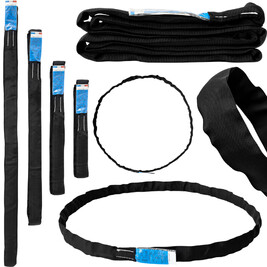
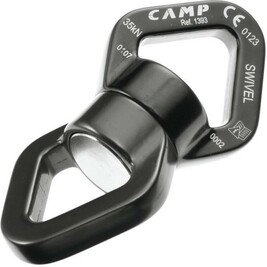
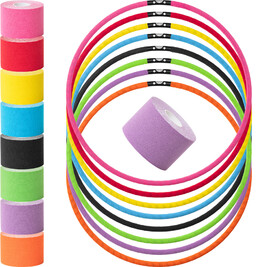

Hello, what material are your aerial hoops made of please?
The aerial hoops are made of steel with an anti-corrosion treatment.
Good morning,
I have a ceiling height of 4.88m, what size sling do I need?
Thank you in advance for your reply.
Hello, I would like to install a wooden beam with shoes on each side in my garage to use my hoop.
I would like to know what thickness you recommend for the beam?
Is 10x10 cm enough or should I go for the 15x15 cm model above?
Thank you in advance for your feedback.
Good morning, Thank you for your message. To answer your question about installing your hoop, here is some important information to consider. The beam clamps we offer are designed for beams measuring 10 cm x 14 cm. These dimensions are therefore perfectly suited to this type of beam section. If you opt for a 10 cm x 10 cm beam, it may be a little thinner than what is needed for an overhead anchor. Furthermore, it's essential that your anchor point can withstand a load of approximately 1 ton. This estimate takes into account not only a person's static weight, but also the additional forces generated by movement, swinging, and tricks, including those involving controlled falls. Even for a person of low mass, these forces can quickly reach several hundred kilograms. In summary, to ensure the safety and stability of your installation, I advise you to opt for a beam with a slightly wider section, such as 10 cm x 14 cm, to ensure sufficient strength. I remain at your disposal if you have any further questions or if you need help finalizing your project. Sincerely, Matthew
Good morning,
I would like to install a hoop in my garden for training. I don't have the space or sufficient ceiling height to install it indoors. In my garden, there are no branches or beams of sufficient strength, so I was wondering about a self-supporting structure. The ones presented on your site are clearly intended for professional use; I wasn't considering a height greater than 4m for the frame. Do you have any indications?
Thank you for your feedback
We only offer professional equipment for this type of outdoor installation. The overhead gantry we offer can be mounted at various heights. See the description of the aerial gantry , there are mentioned the different adjustable heights, there is a height close to the one you want at 4.2 meters high. The problem with most existing amateur structures is that they are often unstable and do not always meet the standards and strength requirements for professional use. The safety of the people who use them is at stake.
Good morning,
Can the hoop be attached to the ceiling? Is there any risk of it coming loose under the weight?
Thank you.
For ceiling mounting, your ceiling mount must be able to withstand at least 1 ton of pressure. If you want to install this type of mounting, I recommend contacting an approved organization, an architect, or a mason. You must consider the weight of the person in motion, not the weight of the person in a static position. One of the best mounting solutions is to attach the device to a load-bearing beam. Please do not hesitate to call us for more information.
Good morning
How much should I allow between each hoop?
Sincerely
Marion
Spacing between two aerial hoops
The manufacturer and practicing professionals recommend a minimum spacing of 2 meters. For optimal comfort, some recommend a spacing of 2.5 meters.
The most important thing is the strength of the beam or structure that will support the hoop attachments. Load calculations are required for this.
Use of aerial hoops in a professional environment
If it is to accommodate the public, it is mandatory to go through a safety commission. They will be able to make these calculations based on the information you give them (weight of people, maximum number of people suspended at the same time, weight of equipment).